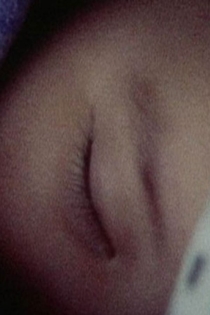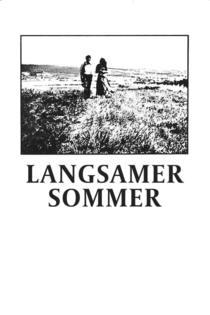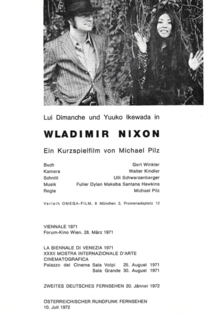
Michael Pilz
2021Himmel und Erde
Michael Pilz
Michael Pilz's 285-minute Himmel and Erde is an essay film or an ethnographic documentary. It contemplates the finite lot of individuals as part of a continuum of human experience in the natural world. Himmel und Erde, translatable as Heaven and Earth, was recorded between 1979 and 1982. The documentary invites the viewer to contemplate the disruptive effects of technology on economic and social ties through circumscribed vignettes of village life which are oft repeated either as recycled footage or variations on a theme.
Heaven and Earth
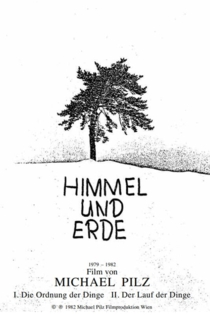
Was übersetzt ist noch nicht angekommen
Michael Pilz
Jeffrey Perkins, Vanessa Van Houten
For one night Michael Pilz rides through New York with a remarkable taxi driver, Jeff Perkins. Sitting by his side, looking and listening, sometimes intervening, he uses his handy high-8 camera like a writing instrument, a „camera-stylo“.
Facts for Fiction

Feldberg
Michael Pilz
Thomas Rauser, Maria Martina
In this evocative work, we hear and see the interactions of a man and a woman in a pristine forest. We gain a sense of intimacy with them and nature. Suddenly we leave the worries of our scattered lives and begin to remember the primal elements of existence: earth, wind, fire, water, people, and creation. This epiphanic process demands patience and an almost meditative state, but it is so worth the effort – just as a journey a mountain meadow requires some effort in order to find its treasures. We leave the traditions of narrative for a more open approach to cinema. There are suggestions and onsets of a storyline, but almost everything remains a mystery for our encountering. This is a film that will allow you to observe and exist, without anxiety, without demands, and it allows you a rare glimpse into the life of things.
Feldberg
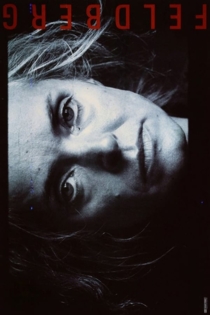
Indian Diary - Days at Sree Sankara
Michael Pilz
Actually, Michael Pilz wanted to make his trip to India kameralos, but when he told a girlfriend just before departure, she said only that he would go to the bottom if he can not take pictures. This is how one of the core works in Mushroom's oeuvre emerged, a film of rarely concise elegance about the craft of ayurvedic healing in hyperconcrete and light-flooded pictures, intensively penetrating in the colors, precisely in every glance that seems to have clapped open hands. One has the happy feeling that mushroom would have felt better in those days. ImplicitIndian Diary - Days at Sree Sankara also pays homage to Robert Gardner and his Great Song on the Burning Forks of Benares, Forest of Bliss (1986), whom Fungus loves so fervently as if it were a piece of him - he likes to tell that sometimes when watching the film, he thinks he has shot this or that scene.
Indian Diary - Days at Sree Sankara

Paticca-samuppada
Michael Pilz
"Deep is the doctrine of events as arising from causes, and it looks deep too. It is through not understanding this doctrine, through not penetrating it, that this generation has become a tangled skein, a matted ball of thread, like munja-grass and rushes, unable to overpass the doom of the Waste, the Woeful Way, the Downfall, the Constand Round (of transmigration)." (Translation: T. W. Rhys Davids)
Paticca-samuppada

Roman Diary
Michael Pilz
In a long, slow, silent procession, they pass by the viewer: the stone-hewn witnesses of a battle that took place more than a century and a half ago in Rome. In 1849 the city, where the advocates of the democratic republic had entrenched themselves, was besieged by French troops who wanted to restore the Papal States. Led by the legendary Giuseppe Garibaldi, the freedom fighters resisted for a long time. Film artist Michael Pilz shows the silent and tranquil remains in a Roman park, with music and sounds from the present in the background. Life around the statues goes in slow motion, but occasionally the noisy, warm, bubbling ‘present’ breaks through: people relaxing outside a restaurant, the remains of a meal. In between we see pictures of the city on which the heroes of yore looked out: a city filled with life in hard-fought freedom.
Roman Diary
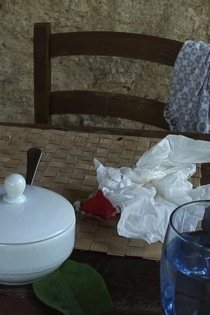
With Love – Volume One 1987-1996
Michael Pilz
To this day, a work in progress called 'Curtains' can be found on the extensive website of Austrian maverick master Michael Pilz. The idea was to edit all the curtains shots he ever made in strictly chronological order – as a pars pro toto representation of his oeuvre and philosophy of cinema. With Love – Volume One 1987-1996 developed from this project. How close it is to the original intentions behind Curtains, only Pilz can say. But considering that Pilz's whole life and art is about self-development, discovery and realisation, every film he makes is in its own way another sum total. Each film is a debut as well as a cenotaph for what was so far; in loving memory, for a morrow of love. This development demands encounters with other people; that's the only way to grow. Come along and meet Pilz − and yourself.
With Love – Volume One 1987-1996
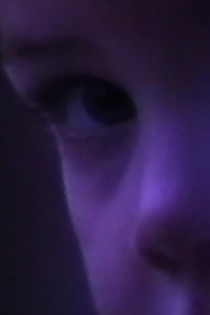
80cm 5t
Michael Pilz
Karl Prantl, Uta Peyrer Prantl
Karl Prantl, the main character in the film, is one of the leading figures of Austrian art. As a sculptor - as one who shapes stones - he has produced an oeuvre of rare consistency and coherence, created out of an awareness of the fundamental concerns and utterances of man.
80cm 5t
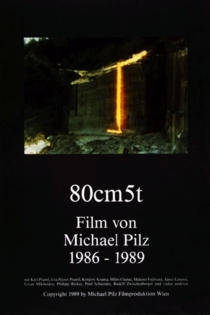
Noah Delta II
Michael Pilz
Attila Grandpierre, Beate Pilz
Accidentally, as if they had secretly intended to do so, Jonas and Maria meet. They go on a trip together and try to find out what sense there is in living and the road to freedom. Just as accidentally, an unknown man is trailed, hindered and kidnapped. Finally, he fights back and becomes the victim of his own doing. Accident? Fate? Necessity?...
Noah Delta II

Three Days, My Friend
Michael Pilz
The gentle breath of wind that blows down from the mountains, hangs in the palm leaves, moves them barely noticeably, caresses them and plays with the last rays of sunshine and the shadows that herald the cool evening... and then, out of the imperceptible, but the all-encompassing standstill of time, beauty and silence, quite unexpectedly the crunching run between the bushes obscuring the view over hill and dale, on and on, up to the high stone wall and upon it, until at last in the sound of the surf and the clanking clash of large and small stones widens the eerie darkness of the sea, as far as the horizon and above the first stars flash, as in each of the countless nights since the beginning. (Michael Pilz)
Three Days, My Friend
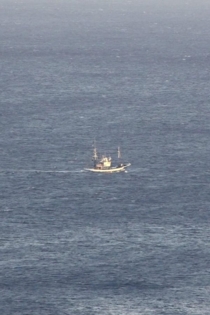
A Prima Vista
Michael Pilz
This film shot by Michael Pilz between 1964 and 2005 is a meditative documentary in which personal images can be read as the director's way to liberation in the spirit of Eastern philosophy. It is conceived as an inner pastiche which permits the message to be immediate and authentic by mosaic-like blending of motifs and time planes where it seems that the film is the only fixed point in the world because, unlike its elusive nature, it has a clear order.
At First Sight
